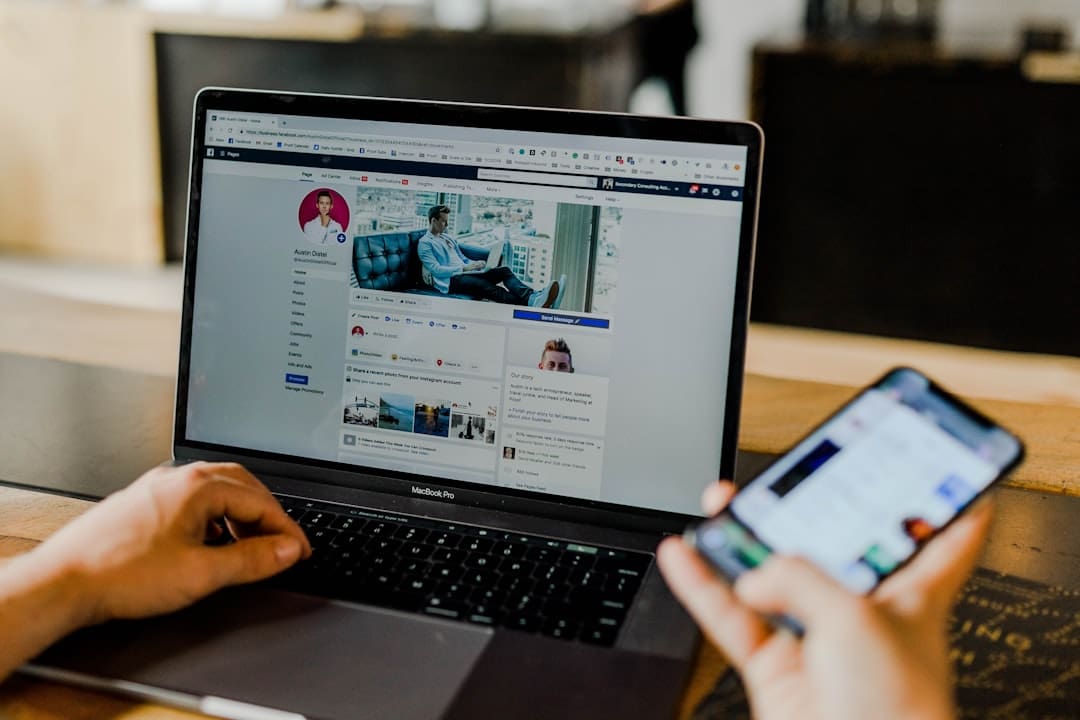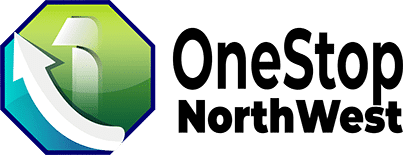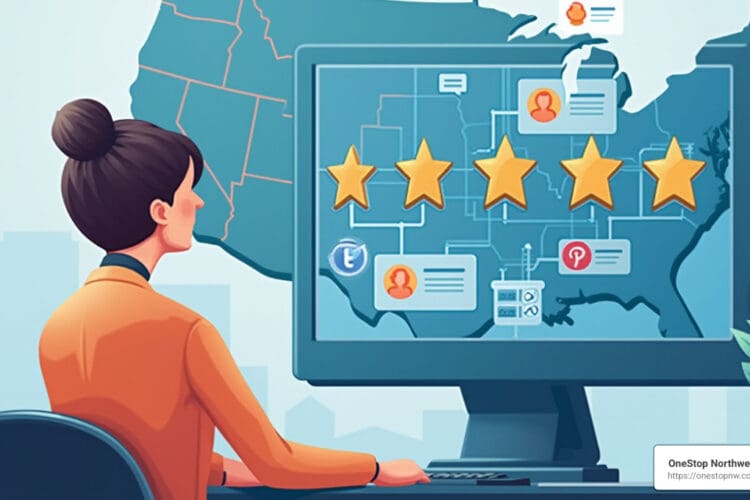
Understanding the Power of Social Media Monitoring
Social media monitoring is a game-changer for businesses aiming to understand and respond to their audience’s needs. It’s more than just keeping an eye on mentions; it involves tracking conversations, analyzing sentiment, and deriving actionable insights to improve brand health and customer relationships.
- Overview: Social media monitoring tracks relevant mentions, hashtags, and keywords to gather data from across the internet.
- Importance: This practice allows businesses to respond to inquiries, manage their reputation, and engage with customers in real-time.
- Brand Impact: Effective monitoring can improve brand loyalty, boost sales, and provide a competitive edge.
As Dylan Cleppe, with over two decades of experience in customer service and business development, I can attest that social media monitoring is essential for navigating today’s digital landscape. It empowers brands to listen actively, engage genuinely, and act swiftly.

Glossary for social media monitoring:
– social media management tools
– social media content
– social media marketing
What is Social Media Monitoring?
Social media monitoring is the process of tracking and analyzing online conversations about your brand, products, or industry. It’s like having a digital radar to catch every mention, hashtag, or keyword related to your business across various platforms. This is crucial for understanding what people are saying about you and how they feel about your brand.
How It Works
The process of social media monitoring involves several key steps:
-
Data Collection: Tools scan social media platforms like Facebook, Instagram, LinkedIn, and X (formerly Twitter) to gather data in real time.
-
Keyword and Topic Tracking: The tool filters conversations using specific keywords, hashtags, or topics relevant to your brand or industry. This helps you focus on what truly matters.
-
Data Aggregation: Once collected, the data is organized and stored in a central database. This makes it easy to view and analyze.
-
Analysis and Insights: Using algorithms and natural language processing (NLP), the data is analyzed to identify trends, sentiment, influencers, and customer preferences.
Tools for Social Media Monitoring
Several tools can help you effectively monitor your brand’s social media presence:
-
Sprout Social: A comprehensive tool that helps you manage your social media interactions and analyze your performance.
-
Agorapulse: Known for its user-friendly interface, Agorapulse offers robust monitoring features and engagement tools.
-
RivalIQ: Great for competitive analysis, RivalIQ helps you understand how your performance stacks up against your competitors.
-
Mention: This tool excels at real-time monitoring, allowing you to track brand mentions and relevant conversations as they happen.
-
Keyhole: Ideal for tracking hashtags and keywords, Keyhole provides in-depth analytics to help you understand your audience better.
Real-World Examples
Let’s look at some real-world examples to understand the impact of social media monitoring.
Coca-Cola’s ‘Share a Coke’ Campaign
Coca-Cola used social media monitoring to track their “Share a Coke” campaign. They:
- Monitored platforms like X, Instagram, and Facebook for campaign mentions.
- Analyzed user-generated content for sentiment and engagement.
- Identified key influencers and brand advocates.
- Tracked real-time feedback and customer stories.
- Measured the campaign’s impact on brand sentiment and sales.
The campaign generated a significant amount of positive sentiment and user-generated content, becoming a viral sensation.
Warby Parker’s Virtual ‘Try-On’ Campaign
Warby Parker used social media monitoring to improve their virtual try-on campaign. They:
- Launched a campaign encouraging users to try on glasses virtually and share their experiences with the hashtag #WarbyHomeTryOn.
- Monitored mentions and user-generated content to track campaign reach and sentiment.
- Analyzed feedback to refine the virtual try-on feature.
This helped them understand customer preferences and improve their product offerings.
Why It Matters
Social media monitoring is not just about tracking mentions; it’s about understanding your audience and making data-driven decisions. It helps you:
- Improve Customer Service: Quickly respond to inquiries and resolve issues.
- Manage Reputation: Catch negative comments early and address them before they escalate.
- Improve Marketing Strategies: Understand what resonates with your audience and adjust your strategies accordingly.
- Identify Opportunities: Spot trends and opportunities for engagement or improvement.

Social media monitoring is a powerful tool that can help you stay ahead of the curve, making your brand more responsive, engaging, and successful.
Next, we’ll dive into the benefits of effective social media monitoring and how it can transform your business strategy.
Benefits of Effective Social Media Monitoring
ROI Improvement
Social media monitoring can significantly boost your return on investment (ROI). By tracking what works and what doesn’t, you can optimize your campaigns for better results. For example, if you notice that certain types of posts get more engagement, you can focus more on those. This helps you allocate your resources more efficiently, leading to higher ROI.
Fact: According to The 2023 State of Social Media Report, 91% of business leaders agree that their company’s success will depend on how effectively it can use social data and insights to inform business strategy.
Competitive Insights
Staying ahead of your competitors is crucial. Social media monitoring allows you to keep an eye on what your competitors are doing. You can see their strengths and weaknesses and adjust your strategies accordingly.
For instance, if a competitor’s campaign is getting a lot of attention, you can analyze why it’s successful and incorporate similar tactics into your own strategy. This gives you a competitive edge.
Reputation Management
Your brand’s reputation is everything. Social media monitoring helps you manage it effectively by tracking brand mentions and customer feedback in real-time.
Statistic: According to research, 94% of consumers avoid businesses after reading negative reviews. By promptly addressing negative comments and reviews, you can turn a bad experience into a positive one, maintaining a stellar reputation.
Brand Mentions
Tracking brand mentions is essential for understanding how people perceive your brand. This includes both direct mentions and indirect conversations about your brand.
By monitoring these mentions, you can engage with your audience more effectively. Responding to both positive and negative feedback shows that you care about your customers, which can build loyalty and trust.

Real-World Example: Coca-Cola’s ‘Share a Coke’ Campaign
Coca-Cola’s “Share a Coke” campaign is a great example of effective social media monitoring. They tracked campaign mentions, analyzed user-generated content, and identified key influencers. This helped them measure the campaign’s impact on brand sentiment and sales, turning it into a viral sensation.
Why It Matters
Social media monitoring is not just about tracking mentions; it’s about understanding your audience and making data-driven decisions. It helps you:
- Improve Customer Service: Quickly respond to inquiries and resolve issues.
- Manage Reputation: Catch negative comments early and address them before they escalate.
- Improve Marketing Strategies: Understand what resonates with your audience and adjust your strategies accordingly.
- Identify Opportunities: Spot trends and opportunities for engagement or improvement.
Next, we’ll explore the key tools and platforms for social media monitoring and how they can help you keep a pulse on your brand’s online presence.
Key Tools and Platforms for Social Media Monitoring
Sprout Social
Sprout Social is a comprehensive social media monitoring tool that helps businesses manage their online presence. It offers features like social media scheduling, analytics, and engagement. One of its standout features is its sentiment analysis, which helps you understand how people feel about your brand.
Example: Sprout Social’s sentiment scoring can help you identify a spike in negative comments. This allows you to address issues before they escalate, maintaining a positive brand image.
Agorapulse
Agorapulse is another powerful tool for social media monitoring. It provides real-time tracking of brand mentions across multiple social media platforms. Agorapulse also offers detailed reports and analytics, making it easier to measure the impact of your social media efforts.
Fact: Agorapulse’s unified inbox helps you manage all your social media messages in one place, ensuring you never miss an important mention or comment.
RivalIQ
RivalIQ focuses on competitive analysis, helping brands keep an eye on their business rivals. Its monitoring and benchmarking features allow you to understand your share of voice and growth compared to competitors. A notable feature is its real-time alerts.
Example: RivalIQ can notify you when a competitor changes their social media bio or boosts an organic post as an ad. This gives you a head start on understanding their new strategies and adjusting yours accordingly.
Mention
Mention is a robust tool that tracks over one billion sources for relevant mentions and comments. It offers powerful filtering options to eliminate noise and focus on what matters most.
Statistic: Mention’s alerts can help you identify spikes in mention volume, which can signal a potential social media crisis or PR opportunity. This allows you to act quickly and effectively.
Keyhole
Keyhole specializes in tracking campaign impact and managing influencer partnerships. It offers real-time searches for influencers, hashtags, and keywords across communities. Keyhole’s visualization function is particularly useful.
Example: Keyhole’s heat maps, charts, and word clouds can be exported into company presentations, making it easier to share insights with your team.
Why These Tools Matter
Using the right social media monitoring tools can significantly improve your ability to track brand mentions, understand customer sentiment, and stay ahead of competitors. Whether you need detailed analytics, real-time alerts, or comprehensive reports, these tools provide the features you need to effectively monitor your brand’s social media presence.
Next, we’ll dive into implementing social media monitoring for your business, covering setup, keywords, multi-channel monitoring, and sentiment analysis.
Implementing Social Media Monitoring for Your Business
Setup
Setting up social media monitoring involves a few key steps:
-
Choose Your Tools: Decide which social media monitoring tools best fit your needs. Tools like Sprout Social and Agorapulse offer comprehensive features to track brand mentions, analyze sentiment, and more.
-
Create Accounts: Sign up for the chosen tools and link your social media accounts. This usually involves granting permissions so the tools can access your data.
-
Set Alerts and Notifications: Configure alerts for brand mentions, keywords, and competitors. This ensures you get notified in real-time about important activities.
-
Customize Dashboards: Use customizable dashboards to view your most important metrics at a glance. Tools like Cyfe offer visualizations that make data easy to understand.
Keywords
Keywords are at the heart of effective social media monitoring. Here’s how to choose and track them:
-
Identify Relevant Keywords: List keywords related to your brand, products, industry, and competitors. Include common misspellings and variations.
-
Set Up Keyword Alerts: Use your monitoring tools to track these keywords. For example, Keyhole allows you to track hashtags and keywords in real-time.
-
Analyze Keyword Performance: Regularly review how often your keywords are mentioned and in what context. This helps you understand trends and customer sentiment.
Tip: Coca-Cola’s “Share a Coke” campaign monitored keywords like “#ShareACoke” to track user-generated content and engagement.
Multi-Channel Monitoring
Your audience is spread across various platforms, so it’s crucial to monitor multiple channels:
-
Identify Key Platforms: Determine where your audience is most active—Facebook, Instagram, LinkedIn, etc.
-
Set Up Monitoring Across Channels: Use tools like Sprout Social to monitor all your social media accounts from a single dashboard.
-
Compare Performance: Analyze engagement metrics across different platforms. For instance, you might find higher engagement on LinkedIn compared to Instagram, prompting a strategy adjustment.
Example: Warby Parker’s virtual try-on campaign tracked mentions and engagement across several platforms to gauge customer satisfaction and improve their feature.
Sentiment Analysis
Understanding how people feel about your brand is crucial:
-
Use Sentiment Analysis Tools: Tools like Sprout Social and Brandwatch offer sentiment analysis features that categorize mentions as positive, negative, or neutral.
-
Monitor Sentiment Score: Keep an eye on your sentiment score to detect shifts in customer perception. A sudden drop might indicate a brewing crisis.
-
Respond Accordingly: If sentiment analysis reveals negative feedback, address it promptly. Positive feedback should be acknowledged and leveraged for testimonials.
Statistic: According to a study, businesses with just 1 or 2-star reviews risk losing 86% of potential customers. Regular sentiment analysis helps you stay ahead of negative trends.
Next Steps
Now that you know how to set up effective social media monitoring, let’s move on to answering some frequently asked questions about the process.
Frequently Asked Questions about Social Media Monitoring
What is social media monitoring?
Social media monitoring is the process of tracking and analyzing conversations, mentions, and trends related to your brand, products, or industry across various social media platforms. This involves using specialized tools to filter through vast amounts of data to find relevant keywords, hashtags, and user interactions.
By monitoring social media, businesses can gain insights into customer sentiment, track the effectiveness of marketing campaigns, and stay ahead of potential PR issues. For example, Coca-Cola’s “Share a Coke” campaign used social media monitoring to track user engagement and sentiment, helping them refine their strategies in real-time.
How does social media monitoring differ from social listening?
While social media monitoring and social listening are often used interchangeably, they serve different purposes:
-
Social Media Monitoring: This is about the day-to-day tracking of specific keywords, mentions, and interactions. It involves reacting to comments, responding to customer inquiries, and managing your online presence in real-time. Think of it as being zoomed-in on the immediate actions and reactions happening around your brand.
-
Social Listening: This offers a bigger picture view by aggregating data over time to identify broader trends and insights. It involves analyzing patterns, understanding customer behaviors, and predicting future actions. This zoomed-out perspective helps in making strategic decisions based on comprehensive data analysis.
For instance, while monitoring might alert you to a sudden spike in negative comments, listening would help you understand the underlying reasons for this trend and guide your long-term strategy to address it.
What are the benefits of monitoring social media for a business?
Effective social media monitoring offers several key benefits:
-
Improved ROI on Marketing Campaigns: By tracking the performance of your campaigns in real-time, you can make data-driven adjustments to improve engagement and conversion rates. This was evident in Warby Parker’s virtual try-on campaign, where monitoring helped them refine their feature and boost customer satisfaction.
-
Competitive Insights: Monitoring competitors’ activities provides valuable insights into their strategies and customer interactions. This can help you identify opportunities to differentiate your brand and stay ahead in the market.
-
Reputation Management: Early detection of negative sentiment or potential PR crises allows you to respond promptly and mitigate damage. For example, businesses with poor online reviews risk losing up to 86% of potential customers, so regular sentiment analysis is crucial.
-
Customer Engagement: Responding to customer inquiries and feedback in real-time fosters a positive relationship with your audience, enhancing brand loyalty and trust.
-
Influencer Collaboration: Identifying key influencers in your industry through social media monitoring can lead to valuable partnerships that expand your reach and credibility.
By leveraging these benefits, your business can not only protect its brand reputation but also drive growth and improve overall customer satisfaction.
Next, we’ll explore some advanced strategies in social media monitoring, including competitor analysis, influencer collaboration, and crisis management.
Advanced Strategies in Social Media Monitoring
Competitor Analysis
Keeping an eye on your competitors’ social media activities is crucial. By monitoring their content, engagement rates, and customer interactions, you can gather valuable insights.
Steps for Effective Competitor Analysis:
- Identify Competitors: Use tools to find out who your main competitors are on social media.
- Monitor Their Content: Watch what they post, how often they post, and the type of content they share.
- Engagement Rates: Check how much engagement their posts get. Look at likes, comments, and shares.
- Customer Interactions: See how they respond to their customers. Are they quick to reply? Do they handle complaints well?
For example, Coca-Cola’s “Share a Coke” campaign monitored competitors to understand their strategies and improve their own.
Influencer Collaboration
Influencers can help expand your reach and boost your brand’s visibility. By identifying key influencers in your industry through social media monitoring, you can form valuable partnerships.
Steps to Collaborate with Influencers:
- Identify Influencers: Use monitoring tools to find influencers talking about your industry or products.
- Engage with Them: Start by liking, commenting, and sharing their content to build a relationship.
- Propose Collaborations: Once a relationship is established, propose collaboration ideas that benefit both parties.
Warby Parker’s virtual try-on campaign is a great example. They identified influencers who then promoted the feature, leading to a successful campaign.
Crisis Management
Crises can happen at any time, and being prepared is essential. Effective crisis management involves monitoring social media to catch issues early and respond promptly.
Steps for Effective Crisis Management:
- Monitor Alerts: Set up alerts for mentions of your brand, especially negative ones.
- Respond Quickly: Address issues as soon as they arise. Apologize if needed and explain how you will fix the problem.
- Learn and Improve: After the crisis is handled, analyze what went wrong and how you can prevent it in the future.
For instance, Starbucks faced backlash over its “Race Together” campaign. They admitted their mistakes and adjusted their approach, which helped them recover faster.
By using these advanced strategies in social media monitoring, you can stay ahead of your competitors, leverage influencer partnerships, and manage crises effectively.
Next, we’ll explore how to use social media effectively to engage with your audience and maintain transparent communication.
Conclusion
At OneStop Northwest, we understand the importance of continuous improvement and strategic decisions in social media monitoring. Our goal is to help you stay ahead of the competition and ensure your brand thrives in the ever-changing digital landscape.
Continuous Improvement
The digital world changes rapidly, and staying ahead means constantly refining our strategies. We use the latest tools and techniques to ensure your social media monitoring efforts are not only effective today but scalable for future challenges. By partnering with us, you gain access to a team dedicated to your success. We believe in forming partnerships, not just providing services. Our commitment to transparency, regular communication, and sharing insights empowers you as a business owner.
Strategic Decisions
Monitoring social media conversations around the clock has become a necessity in today’s world. With our expertise, you can transform unstructured data into valuable insights that drive business growth and lift customer experiences. By leveraging advanced audience intelligence, you can gain real-time insights into audience engagement with your content and brand. Understand their preferences instantly through social signals, engagement metrics, and audience profiles.
Why Choose OneStop Northwest?
At OneStop Northwest, we provide a comprehensive suite of services custom to your business needs. From custom web design and corporate branding to social media management and content creation, we have the solutions to help you build and maintain a strong online presence.
By partnering with us, you can:
- Maximize marketing campaign ROI
- Offer customer service that outclasses your competitors
- Connect with influential figures who’ll generate more leads
- Avoid a PR disaster and save your reputation
In conclusion, effective social media monitoring is key to thriving in the competitive social media landscape. It’s about actively listening to what people say about your brand and genuinely responding to their concerns. With OneStop Northwest by your side, you’ll have the tools and expertise to make informed decisions that drive your business forward.
Contact us today to start your journey to the top of local search results and beyond!





